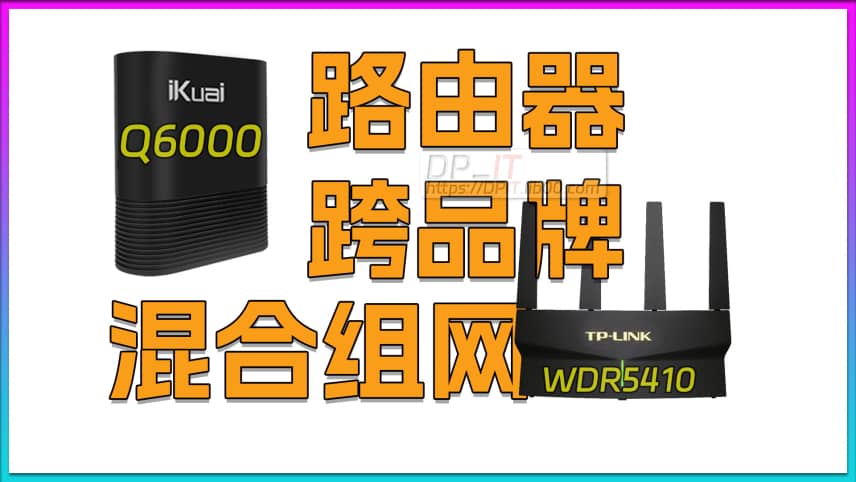
iKuai OS VLAN Beginner's Tutorial
Summary Content
# iKuai OS VLAN Beginner's Tutorial
## 📝 Video Overview
This tutorial provides a beginner-friendly introduction to VLAN functionality on iKuai routers. The presenter, DP, shares practical experience using a lightweight approach (WiFi + iKuai router) that eliminates the need for complex equipment like Layer 3 switches, making it ideal for home networks and small office environments.
---
## 🎯 Core Content
### What is VLAN?
VLAN (Virtual Local Area Network) serves one primary purpose: **network isolation**. The video uses an intuitive metaphor, describing VLAN as an "isolated room":
- **Traditional Network**: All devices share the same IP segment (e.g., 192.168.1.x) and can communicate freely
- **VLAN Network**: Specific devices are assigned to separate IP segments (e.g., 192.168.31.x), limiting communication to that segment only
**Working Principle**: Devices on different IP segments cannot directly communicate, achieving network-level isolation.
### Practical Use Case: Guest WiFi Isolation
The video demonstrates a typical home networking scenario:
**Objective**: Create a guest WiFi network that allows internet access while preventing access to the host's local devices (NAS, computers, etc.).
---
## 🛠️ Configuration Steps
### Step 1: Create VLAN
Navigation: `Network → VLAN → New`
Configuration parameters:
- **VLAN ID**: 31 (recommended to match network segment)
- **Name**: vlan31
- **IP Address**: 192.168.31.1
- **Subnet Mask**: 255.255.255.0
- **Interface**: Select LAN1
- **Note**: LAN internal internet access only, no access to other devices
### Step 2: Configure DHCP Server
Navigation: `DHCP Server → New`
Configuration parameters:
- **Service Interface**: vlan31
- **IP Address Pool**: 192.168.31.2 - 192.168.31.99 (expandable to 254)
- **Subnet Mask**: 255.255.255.0
- **Gateway**: 192.168.31.1
- **DNS**: Configure as needed
- **Verify Interface IP Validity**: Enable
- **Route Selection**: All routes
### Step 3: Configure WiFi Interfaces
Navigation: `WiFi Settings → WiFi Name Settings`
Create two independent WiFi networks:
- **Main WiFi** (i_5G): Bound to LAN1 interface, IP segment 192.168.1.x
- **Guest WiFi** (i_5G_31): Bound to vlan31 interface, IP segment 192.168.31.x
Both WiFi networks use the same security type and encryption, but assign different IP segments.
---
## 🔧 Critical Configuration
### LAN1 Interface Settings
Navigation: `Internal/External Network Settings → Internal Network Port → LAN1`
**Important**: Disable the "Allow other LAN devices to access this LAN" option—this is the key to achieving complete isolation.
- **Before disabling**: VLAN31 devices can access main network devices
- **After disabling**: VLAN31 devices can only access the gateway (for internet), not other main network devices
---
## ✅ Testing & Verification
### Main Network Test (192.168.1.x)
```bash
ping 192.168.1.1 # Gateway - Success
ping 192.168.1.2 # NAS - Success
```
Result: All devices communicate freely as expected.
### VLAN Network Test (192.168.31.x)
```bash
ping 192.168.31.1 # Gateway - Success (ensures internet access)
ping 192.168.1.2 # Main network NAS - Failure (isolation successful)
```
Result: Only gateway access for internet, no access to main network devices—complete isolation achieved.
---
## 🚀 Extended Application Scenarios
### Home Scenarios
- **Child Network Isolation**: Restrict children's devices from accessing certain resources
- **Smart Home Isolation**: Separate IoT devices from main network for enhanced security
- **Guest Network**: Provide visitors with independent internet access
### Office Scenarios
- **Department Network Isolation**: Separate networks for finance, IT, administration, etc.
- **Temporary Work Network**: Provide restricted network access for short-term partners
- **Device Classification Management**: Separate management for servers, office computers, and guest devices
---
## 💡 Advanced Techniques
Leveraging VLAN IP segment characteristics enables:
1. **Traffic Control (QoS)**: Set bandwidth limits for different VLANs
2. **Static IP Assignment**: Bind fixed IPs to specific devices via DHCP
3. **MAC Address-Based Policies**: Fine-grained device management
4. **Batch Device Management**: Group similar devices in one VLAN for unified policy management
---
## 📌 Important Notes
- This tutorial uses a lightweight approach suitable for beginners
- Enterprise applications may require Layer 3 switches
- Recommended: Keep VLAN ID consistent with IP segment (e.g., VLAN 31 = 192.168.31.x)
- Ensure LAN1's "Allow other LAN devices access" option is disabled for complete isolation
---
## 🎓 Target Audience
- iKuai router beginners
- Home users requiring network isolation
- Small office network administrators
- Individual users with basic network security needs
---
## 🏷️ SEO Keywords
iKuai router, VLAN tutorial, network isolation, guest WiFi setup, home network security, router configuration, DHCP setup, LAN management, beginner guide, virtual LAN
Related Contents
View HDD SMART Info on Synolog...
Duration: 12:19 | DPSunshine+Moonlight+Win10 Remot...
Duration: 05:10 | DPClaude Code Usage Statistics: ...
Duration: 03:50 | DPClaude Code Status Bar: Instal...
Duration: 06:47 | DPCheck Real CPU Temperature via...
Duration: 08:06 | DPClaude Code Conversation Recov...
Duration: 02:48 | DPRecommended

iKuai Q6000+TP-Link 5410 Cross...
08:57 | 4Recently, I conducted a cross-brand router hybrid ...

Sunshine+Moonlight+IPv6 Remote...
09:40 | 10Sunshine+Moonlight: A Complete Guide to Remote Gam...

Sunshine+Moonlight+Win10 Remot...
05:10 | 30How to achieve remote self-service shutdown (Win10...

2025 Home Network Upgrade Plan
06:25 | 82025 Home Network Upgrade Solution Sharing: sharin...




